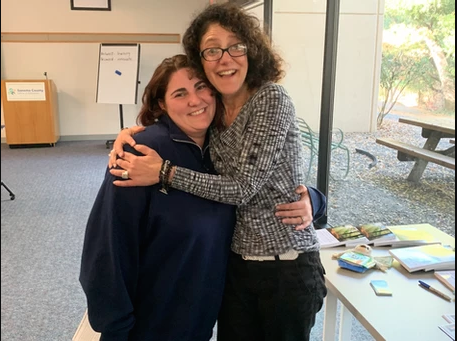Looking at the Teen Brain
By Donna Erickson, MA
DEVELOPMENT: During adolescence the cortex of the brain goes through a major period of growth. (The Cerebral Cortex is the outer layer of brain. The Prefrontal Cortex is the last part of the brain to mature (completing about age 26). This part of the brain is located just behind the forehead and is important for decision making, executive functioning, controlling impulses, setting goals, organizing and planning.
In early adolescence the brain goes through a second pruning process, similar to the one in the toddler years (ages 2-6 yrs). During this time, teens are expected to expand their capacity for abstract and critical thinking, analyzing and questioning complex issues….and to evaluate alternatives before acting.
However, most parents of teens report much “drama” and dysregulation during these years.
CHALLENGES REPORTED:
- Overwhelmed feeling about body and body image
- Self-identity
- Short attention span
- Poor impulse control
- Academic fears/demands
- Peer relationships
- Uncertainty about future (later adolescence)
- Emotional self-regulation
- Unpredictable mood and mood shifts
- Lack of empathy and moral awareness
- Self-centered
- Peers and outside influences are more important (social media, etc.)
GENDER & HORMONES: If you add gender and hormones to the developing brain at this time you’ll see that girls have a higher proportion of gray matter (the substance for processing and interpreting information) while boys have a higher proportion of white matter (needed for exchange of information and communication).
This means that girls might be more efficient in processing information, have stronger verbal skills and can manage several activities at the same time. More white matter equals the ability for navigation and solving things like math problems. White matter is responsible for transferring information throughout the brain.
Other areas of the brain grow differently as well. The Hippocampus is responsible for memory, learning, emotion, and transferring short term to long term memory. It is sensitive to the female hormone estrogen, so it grows faster and larger in girls, which explains their stronger social skills.
The Amygdala (the seat of emotional control) and Hippocampus are sensitive to male sex hormones and grow larger in boys. Both are involved in the male’s body response to fear and danger (sooner than in girls). These encourage being more assertive, more physically active with the need to move around, and boys’ interest in contact sports. Did I mention sexual desires? No mention needed.
The female brain develops sooner than the male’s. However, you need to keep in mind that the Prefrontal Cortex is not fully mature until age 26 (or thereabouts).
THE GOOD BRAIN NEWS: The brain has great neuroplasticity (sponginess) – it can grow new neurons (the electrical and chemical signals that send information throughout the brain and other connections like the spinal cord) throughout LIFE, if it is exposed to positive experiences.
If parents/caregivers can continually expose youth to positive interactions, they will help the development of new neurons and synapse (the connection between neurons). Listening to your youth and connecting him/her to things that are of prime interest might be a good way to help this development. If it’s an athletic, musical, artistic ability – encourage it. If it’s limited only to video games, try to dissuade! It’s the positive experiences that most effectively connect the neurons.
POSITIVE EXPERIENCES = NEURON CONNECTIONS:
- Exercise (aerobic)
- Adequate sleep
- Meditation – quiet/down time (deep breathing)
- Adequate diet – Fruits/Vegetables (greens) and Omega-3 fatty acids
- Social clubs at school or in community
- Community service/volunteering
- Religious/spiritual connections
FURTHER MESSAGES FOR PARENTS/CAREGIVERS: Helping teens during this developmental time can be frustrating (at best).
HERE ARE A FEW IDEAS THAT MIGHT HELP:
- Give teens simple instructions both verbally and in writing: “please put your laundry in the laundry room” rather than “please put your laundry in the laundry room, empty the waste basket into the trash bin, and take it outside.”
- Multitasking is not a strong skill for most youth! Help them keep track of time, organize tasks and identify priorities; use calendars both written and on their phone (have the information in more than one place.)
FINAL MESSAGE: The teen years don’t have to be spent in total frustration. Begin talking with your child, not just to your child – early! The younger child is often more willing to have a conversation with you. If conversation becomes comfortable and familiar with your pre-adolescent, it’s more likely to continue through the teen years. Family meals are one of the most relaxed places (without phones.) Conversations can take place in the car (without phones or ‘tunes’) or on a walk (try the beach) or any other place that you think you can have your child’s attention for more than 8 seconds.
STRATEGIES FOR TALKING WITH YOUR TEEN:
- As you talk with your child, ask questions such as “hey, what do you think about……..?”
- Avoid interrogations
- Learn to wait for a reply ….
- Try not to be judgmental – stay neutral
And, remember, you were a teen once!
References:
Daniel J. Siegel, M.D. Mindsight 2010.
Linda Burgess Chamberlain, Ph.D. MPH, The Amazing Adolescent Brain
Bruce D. Perry, M.D., Ph.D., Brain Model
Expert Author Biography:
Donna Erickson, M.A. is a valued Help One Child Trainer and Podcasts and Blog contributor. Donna has trained Foster Parents for 30+ years through The Santa Clara County Department of Family and Children Services and served as the Foster and Kinship Care Education Program Director for 16 of those years. Donna stays current on her continuing education in her three fields of expertise: nursing, counseling, and educating. She brings experience and wisdom from her years as a foster youth, parent and grandparent! She also facilitates and trains our Parents of Teens+ and Tweens and Teens Parent Connection Groups.









